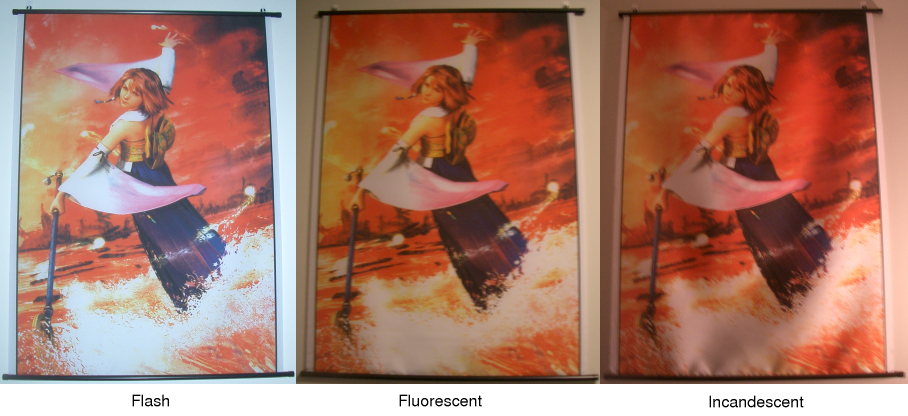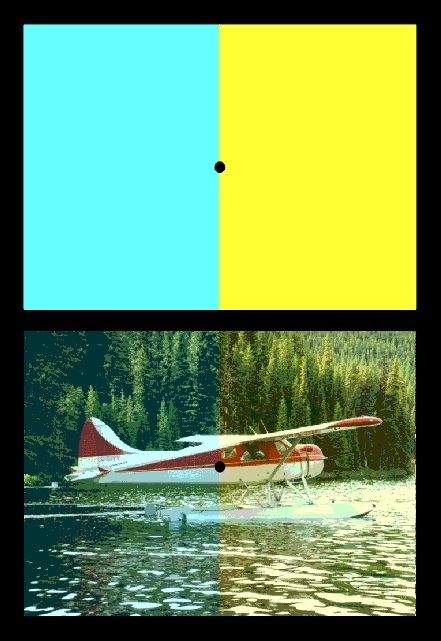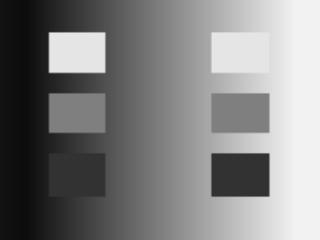

1. Lightness constancy Althought our eyes give us great lightness constancy on materials such as paper. There are some materials that are made to have low lightness constancy, such as this gauge that's white in the daylight but pitch black in low light condition.
2. Color scission Color scission causes observes to perceive two different types of blue because of the perceived layering effect.

Shows how the lighting conditions can greatly affect how something appears by presenting three images of the same object from my room under three different types of light.
Shows how color perception is relative. If someone were asked to place the two grey dots on the gradient at the bottom, they should put them at different locations on either side of the center. They are however both 50% grey.

The left side of the picture is bluish and the right side is yellowish, but after looking at the blue and yellow rectangles for half a minute, the two halves of the picture look the same because your receptors have adapted to the blue and the yellow.
A good example of simultaneous contrast. Because of simultaneous contrast, the white circles darken when you don't look directly at them, but they change to white when you look right at them, creating a twinkling effect.

An example of how lightness constancy can fail in some instances. The center bar is a solid color, but it's ends appear different due to the surrounding gradients.
This image shows simultaneous color contrast. The red squares are all the same color, but the background color of the bar they are placed on affects their perceived color.
The CIE color space:
 After Image Color
After Image Color Simultaneous Color Contrast
Simultaneous Color Contrast




Perception and Graphics |
Resources |
Schedule |